عدن

Aden
British colony

Kathiri State
Emirate

Mahra State
Emirate

Quaiti State
Emirate
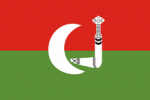
State of Upper Yaffa
Emirate
Quick reference
General issues: Aden/British colony 1937-1963, Aden/Federation of South Arabia 1963-1965, Quaiti (State of Shihr and Mukalla) 1942-1955, Quaiti (State in Hadhramaut) 1955-1968, Kathiri (State of Seiyun) 1942-1968, Kathiri (State in Hadhramaut) 1967-1968, Mahra State 1968, State of Upper Yafa 1967
Country name on general issues: Aden
Currency: 1 Rupee = 16 Anna, 1 Anna = 12 Fils 1937-1951, 1 Shilling = 100 Cents 1951-1965, 1 Dinar = 1000 Fils 1965-1968
Population: Colony of Aden 138 000 in 1955
Political history Aden
Aden is located in western Asia. The city of Aden is captured by Great Britain in 1839 with the aim to protect the shipping routes to British India and British East Africa and to serve as a refueling station on those routes. In the following decades the British influence on the emirates in the Aden hinterland gradually grows. In 1886, the first formal treaty is signed. Eventually treaties with some 25 emirates are signed and the protectorate of Aden is formed.
Aden is at first governed from British India. In 1937, the city of Aden becomes a colony in its own right, reporting directly to the Colonial Office in London. In 1963, the colony of Aden is transformed into the State of Aden to become part of federation of South Arabia, still a British protectorate. With the exception of the State of Upper Yafa, most emirates in the west of the former protectorate of Aden joined the federation of South Arabia. The emirates in the east of the former protectorate of Aden joined to form the protectorate of South Arabia. In 1967, both the federation and the protectorate of South Arabia become part of the peoples republic of Yemen, often called South Yemen to distinguish it from the Arab republic of Yemen, often called North Yemen. North and South Yemen in 1990 join to form the republic of Yemen as we currently know it.
Postal history Aden
The post offices in Aden are run initially as part of the postal service of British India. When Aden becomes a separate colony it also gets its own postal administration and in 1937 the first stamps are issued in Aden. Aden issues stamps until 1965. The stamps of Aden are succeeded by those of the Federation of South Arabia, then those of South Yemen and currently the stamps of Yemen.
The stamps of the colony of Aden are also issued for use in the protectorate of Aden. However, in 1937 a number of emirates in the protectorate of Aden is allowed to issue stamps of their own. The reason being that these emirates object to the image of the British sovereign on the stamps of the colony of Aden. Thus, in 1942, Kathiri State and Qu’aiti State issue their first stamps. A 1939 postal union made the issues from Aden and the emirates valid in all of the colony and protectorate of Aden. Kathiri issued stamps first as Kathiri State of Seiyun and, from 1967 on, as Kathiri State in Hadhramaut. Qu’aiti issued stamps first as Qu’aiti State of Shihr and Mukalla and from 1955 as Qu’aiti State in Hadramaut. In 1967, Mahra State and the State of Upper Yafa also issued stamps. All these issues are succeeded by the stamps of South Yemen and after 1990 by those of Yemen. The emirates issues stamps until 1968 when they are already part of South Yemen.[1]The stamps issued by the individual emirates from 1963 to 1968 are disputed. Related to their editorial policies some catalogs – Scott and Stanley Gibbons – have decided not to list these issues.
Album pages
← Previous page: Abu DhabiNext page: Afghanistan →

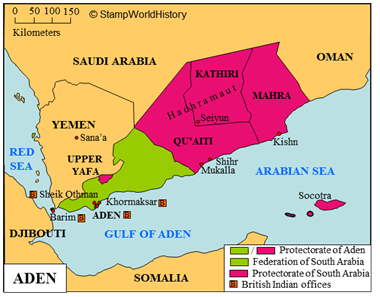
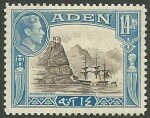

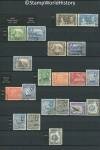
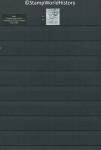
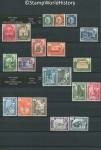

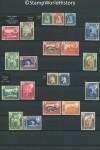

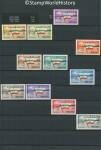
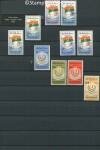
Stamps issued by Aden, Kathiri State, and Qu’aiti State before the formation of the Federation of South Arabia could be used throughout each other’s territory. In last paragraph “Shirh” should be spelled “Shihr”
I checked and the Stanley Gibbons Middle East catalog states that the stamps of Aden were used in Kathiri and Qu’aiti State until 1942. Which suggests that the use of the stamps issued for each of the territories was territory specific. Is there a resource that you can refer too? Thanks for spotting the typo.
Gerben
The Stamp Atlas by W. Raife Wellsted and Stuart Rossiter (1986) in entry for Qu’aiti State (p. 224) indicates “A postal union between Aden and the protected states was signed in 1939 by which any stamps were inter-valid.” Article also explains that stamps of the protected states were delayed to 1942 by start of World War II. I think Gibbons is referring to the fact that the protected states had no stamps of their own prior to 1942 and used only stamps of Aden colony to that point, leaving the question of inter-validity after 1942 open. I don’t think any emirates actually issued stamps as early as 1937 though your text implies they could. I think 1937 was the date of objection to the use of colony stamps depicting the British sovereign in the protected states and perhaps when permission was given to the protected states to issue their own stamps. In 1939 the postal union was established and stamps followed in 1942.
William
William. Thanks for looking into this. Should have been aware myself, The Stamps Atlas is one of my favorite resources. Anyway, I updated the profile.